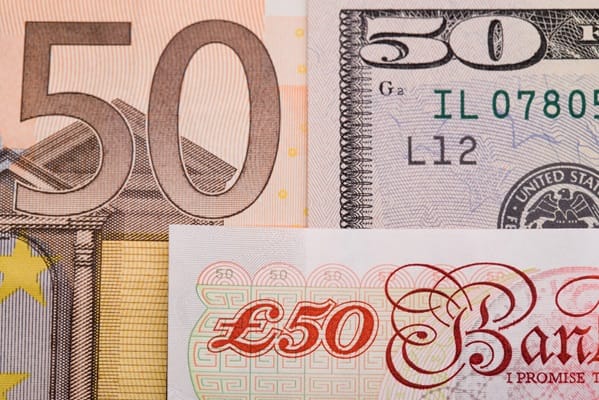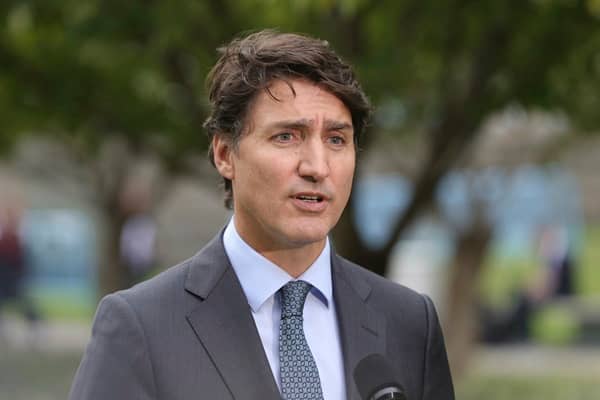Bussiness
GBP/USD pair dropped to its lowest level since April – London Business News | Londonlovesbusiness.com

The GBP/USD pair dropped to its lowest level since April, reaching 1.2352, before modestly rebounding on Friday to trade at 1.2409.
This reflects the British pound’s weakness against a strengthening U.S. dollar. Despite the pair’s slight intraday recovery attempt, both technical analysis and economic indicators continue to signal a clear bearish bias that may dominate the pair in the near and medium term.
In my view, the British pound’s performance this week was weak compared to most other major currencies, registering its largest decline against the Japanese yen.
The market heat map, which shows currency change percentages, indicates that the British pound lost 1.41% of its value against the U.S. dollar. This loss comes amid an improving dollar supported by positive U.S. economic data, enhancing its appeal as a haven for investors in the face of global economic uncertainty.
I believe that U.S. economic data had a clear impact on the dollar’s performance throughout the week. The U.S. Department of Labor reported a decline in initial jobless claims to 211,000, below the expected 222,000. This data reflects the continued strength of the U.S. labour market, supporting the possibility of the Federal Reserve maintaining its tight monetary policies. This scenario strengthens the dollar against the British pound, which faces internal economic challenges in the UK.
On the other hand, the British pound is under pressure from local economic issues in the UK, primarily concerns about slowing economic growth and rising inflation rates. The Bank of England faces a dilemma in how to address these challenges without harming fragile economic growth. Under these circumstances, the pound loses its appeal compared to the U.S. dollar, which benefits from more clear and stable monetary policies.
From my perspective, investors are closely watching the U.S. Manufacturing PMI data due later on Friday. The reading is expected at 48.4, which could further boost the dollar if it exceeds expectations. If the index surpasses the 50 level, it would indicate that the U.S. manufacturing sector has returned to growth, increasing pressure on the GBP/USD pair. Conversely, if the data falls below expectations, it may provide some support for the British pound to limit its losses.
Investors will also focus on inflation levels in the PMI report, known as the Prices Paid Index. The index is expected to rise to 51.7 from 50.3. If the reading comes in higher, it will strengthen expectations that the Federal Reserve will continue to raise interest rates, increasing downward pressure on the GBP/USD pair.
I believe that the downward trend for the pair is likely to continue. The pound appears to face strong resistance at the 1.2400 level, while the key support level lies at 1.2300. If this support is broken, it could open the door for further declines to lower levels, possibly reaching 1.2200. Conversely, the pair needs to break through the 1.2500 resistance level to regain upward momentum, which seems challenging under current conditions.
Therefore, I see that the combination of fundamental and technical factors confirms that the bearish trend for the GBP/USD pair may persist in the near future. The U.S. dollar continues to benefit from strong economic data and expectations that the Federal Reserve will maintain its tightening policies. In contrast, the British pound faces pressures from the local economy and unclear monetary policies from the Bank of England.
I believe traders should exercise caution when trading this pair. The overall trend indicates further declines, but unexpected surprises in U.S. or UK economic data could lead to significant price fluctuations. Therefore, it is essential to closely monitor upcoming economic data and make trading decisions based on a comprehensive analysis of economic and technical indicators.
In conclusion, the GBP/USD pair faces significant challenges in maintaining its current levels. U.S. economic data, particularly the Manufacturing PMI, will be crucial in determining the pair’s future direction. If the dollar continues to strengthen, we may see further declines in the British pound, while any positive signals from the UK economy could temporarily help limit losses. In my opinion, investors need a flexible trading strategy that considers all influencing factors to ensure informed decision-making in this volatile market.










